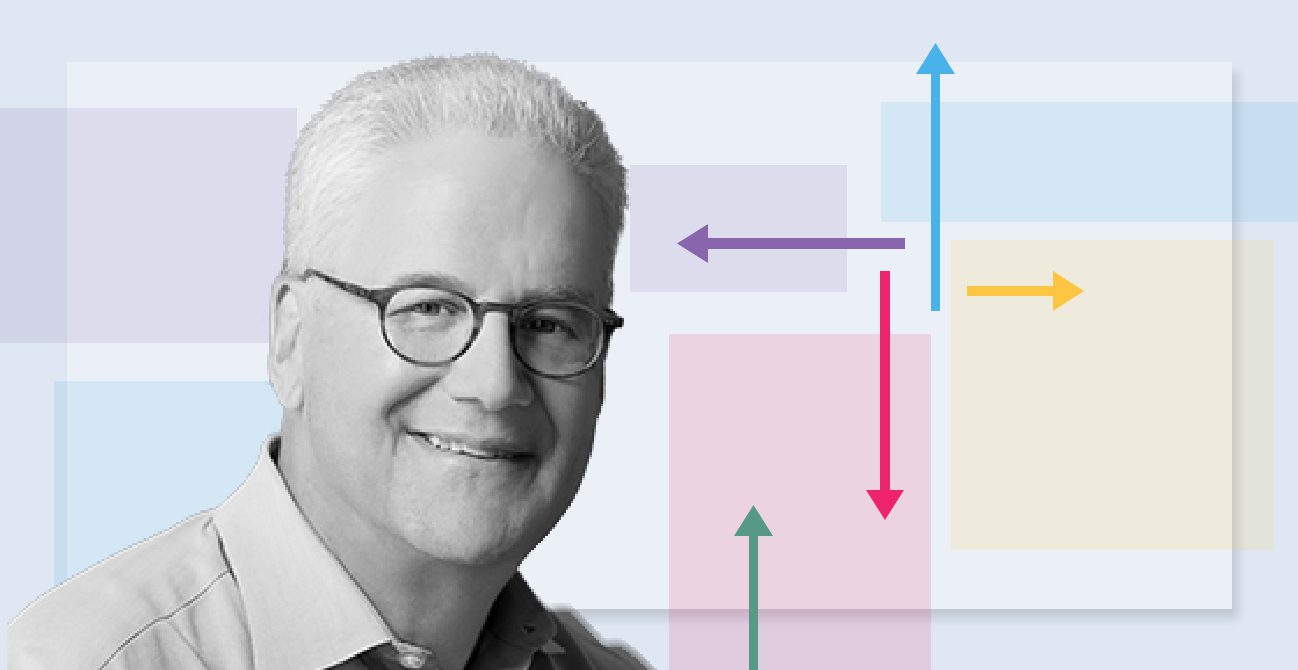Can you recall a professor who had a lasting impact on your life? There was something about their demeanor, their motivating message, maybe a trace of humor and genuine inspiration that made a difference. Even to this day, you can recall their words that challenged and inspired you.
During the Pulse Everywhere, the All-Access VIP Pass included a Live Unplugged session with best-selling author of “Crossing the Chasm,” Geoffrey Moore, in conversation with CEO Nick Mehta. An industry luminary, he is respected for his business insights that directly impact customer success. His model studies, advice, and revelations are almost prophetic. So when Geoffrey sat down with Nick, he began to weave a story of business models, zones, performance, and productivity that brought clarity and understanding to many listening.
Transformation is the Name of the Game
The depth of the conversation began when Nick raised that every company is striving for transformation. Whether they are a startup attempting to disrupt their industry or field, or an existing company trying to disrupt itself, they seek a form of transformation. Nick suggested that the business model to follow and achieve goals must come from Geoffrey’s book, “Zone to Win.” According to “Zone to Win,” if you are a disruptor to an industry, you are “catching the next wave.” However, if you are an existing business, you are the incumbent, and “you have to play defense to prevent the next wave from catching you.”
“As a startup, transformation is your destiny,” Geoffrey began. He explained that there is an expectation by their board and shareholders that productivity is core for the challenged business. However, disruptive innovation also disrupts core business, which is “not tuned to play the other game.” In response to this idea, Geoffrey developed a Zone model which includes four prescriptive zones.
The Four Zones
- Performance Zone: is a classic performance model that entails making the plan, making the numbers, and reporting the results to the board and shareholders.
- Productivity Zone: customer success ‘lives’ in this zone, along with IT, marketing, and human resources. It is a process-oriented zone focused on getting the methodology of each process right (such as onboarding, experience, and NPS) and improving on them every time to make the entire journey better.
- Incubation Zone: This model begins with a “blank sheet of paper and no governance.” It is not a venture capital economic model—looking for a VC return. Instead, it is a venture capitalist management model or funding to the next milestone. You are essentially trying to “manage chaotic change in some reasonable manner.”
- Transformation Zone: Geoffrey advised to use this zone sparingly. “We use the word ‘transformation’ kind of like it’s mayonnaise. You know—every sandwich is better with transformation on it. No, it’s not. Transformation is like horseradish and sriracha. It’s hard.”
Geoffrey clarified that the Transformation Zone stems from the customer-centric movement of shifting from on-premise software to SaaS. As a result, the playbook changed from customer service to customer success, with the goal of customer longevity no longer promised once software moved to the cloud.
The Productivity Zone
Nick and Geoffrey’s conversation turned to the Productivity Zone. This zone is traditionally where customer service and customer success existed, and their job concentrated on getting more active users, more renewals, and reducing churn. Geoffrey noted there are two spends in the Productivity Zone, and often they collapse into one. One is factored into a systems-oriented budget to maintain underlying systems. However, with impending digital disruption, other parts of a company will demand action, especially IT.
In the IT world, IT has gone from being not just a systems provider, but we’re supposed to provide the core ingredients of the next transformational offer from our company.
He went on to explain that you are going beyond maintaining state but trying to “change state.” Those motions are not always explicitly budgeted. These are programs different than systems and should be managed appropriately. He emphasized that you need to hold the organization accountable to the desired state of change, particularly with programs.
Geoffrey used the example of believing you can get fit simply by joining a gym versus going to the gym. Unfortunately, without the “skin in the game” and a program of consuming work, the Productivity Zone created a reputation around customer success being a cost center. It was tasked with becoming more efficient and cutting costs in ratio to ARR. As a result, customer success in the Productivity Zone was nothing more than another system. When confronted with the Performance Zone, companies had to adjust when they wanted to expand and make CS responsible for renewals. However, many found that expansions and renewals stalled and their value trapped.
Trapped Value and Money Buckets
Geoffrey explained that when a company, organization, or even a salesperson, is product-centric, the aim is to sell the product. However, according to Geoffrey, there is a vast difference between selling and buying. “Rather than thinking about making your product easy to sell, what if you turn it around? Do some thinking about making it easy to buy.” To turn the tide to make the product easy to buy, understand why people buy. Most are trying to solve the problem of trapped value.
The premise behind trapped value is there are “bottlenecks” within a company related to revenue and cost-efficiency. These systemic knots are present at any time in an organization and prevent stakeholders from “not making their program or meeting their plans.” “The trapped value is screwing them up,” Geoffrey said. The CS org must first identify the trapped value. The customer then has an inevitable “bucket of money” to pay to have the problem mitigated. Identify the problem within the account and discover who has the “money bucket” to release the value. It is the charter of both your account manager and your CSM to source the trapped value within your customer base, which will lead to expansion opportunities or, at the very least, better product adoption. Either way, it hopefully leads to renewals, which is a type of continuous sales.
Being the Domain Expert
The proper path to take in customer success is becoming the domain expert in the customer relationship. This means being an expert on the problems that your customers face. The more you understand their issues, the better your ability to solve them.
Another way to benefit the customer and impact customer success is to “take the noise out of the system.” The whole point of the subscription model is that the customer just wants the product to work. Geoffrey explained that the “consumption-based model is to be sensitive to the deltas and the dynamics of the system.” For example, in CS, you “do your best to give your customer the dials to dial it up and down so that they feel in control.” The caution is when a customer is not allowed to consume. Nick added that some companies introduce the subscription model over time, allowing customers to acclimate because they like predictability sometimes.
The last “golden nugget” that Geoffrey offered was that “bad coverage is worse than no coverage.” This is difficult when trying to deliver value through a partner because it’s their business, not yours. While you may be trying to increase your footprint, coverage and get the expense off your balance sheet, which is the whole point of a partner model, sometimes the partner may have other ideas. Instead of more partners, be selective and choose fewer good partners. Also, consider incentivizing your partners with certifications, upskilling their talent, and helping them succeed. However, if their NPS and health scores deteriorate despite efforts, the next step is to cut ties with the partner rather than ruining your reputation and having what revenue they bring be “bad money.”
This fireside chat had us all sitting on the edge of our seats, waiting for each profound nugget of wisdom to drop in our laps. Pulse Everywhere brought moments of learning, and it was as if Geoffrey was our favorite teacher. In each story and explanation that he offered, we knew something magical happened. To say the humorous and insightful discussion that transpired was a game-changer for everyone watching is an understatement.
For many, we were transported back to that class, where our favorite professor mixed humor, excitement, and passion for a subject that suddenly made sense.

